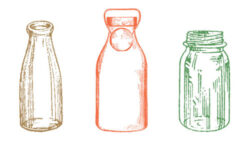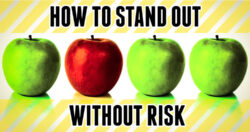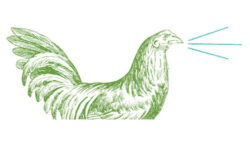A busy store in the after-work rush. A shopper hurrying through to get what she needs as quickly as possible so she can get home and start cooking dinner. Distractions: the phone rings, perhaps her kids are in tow. Aisle after aisle. Does your product have what it takes to stand out in this sea of mayhem?
This is the fourth article in our series, How to Build a Strong Gourmet Brand. See the full series here.
Not only does your product have a slim window on the shelf—just 2-3 seconds—while vying for attention with competing products, it is also going up against all these distractions in the store environment. When you look at it this way, your window is even smaller. It’s all about first impressions in this moment to make your product catch the consumer’s eye. How can you make your product stand out?
- Container. Is your container like all the others in its category? If a unique container isn’t an option, then it’s all about your graphics to make the differentiation. If you are able to utilize a unique container, then you have a great starting point and the graphics take it even further. See what the competition is doing, and if there is an opportunity to do something different, consider it. (Related: What Does Your Container Say About Your Product?)
- Graphics. The product needs to have an arresting appearance that makes consumers stop and look. Examine what others are doing in the category and do something different—whether that means going louder or more toned down. Your product is not going to stand out by blending in. But don’t do something different just for the sake of being different—it needs to be grounded in reason and in line with the brand, product and audience. (Related: 5 Reasons to Know Your Competitors.)
- Communication. The consumer needs to instantly know what the product is and how to use it. If they do not understand these fundamentals then the opportunity is lost and they will move on. Going a step further, it should be clear what differentiates your product from the competition. This may or may not be conveyed literally. It may come from look and feel—for example, a higher end design conveys a more premium product.
- Enhancement. Consider add-ons to the packaging such as a hangtag, neckband or callout label to enhance the communication and messaging. Keep in mind however that a hangtag opens up opportunity to be damaged or catch on something so you want to make sure it’s done effectively to mitigate these risks. A callout label offers the opportunity to add an additional selling point to an area of the package that might not otherwise be able to be printed on—such as a window or neck area in the case of the neckband.
The big picture: It all comes down to all these elements working together effectively. They each are made stronger by the others. When they all come together to leverage each other is when the magic happens in that short window of opportunity. Of course, many other factors in branding come into play in the viability of a product, and we’ll be diving into those topics in upcoming articles in this series, so stay tuned.




